Posts Tagged: Sonoma County
Master Beekeeper Cheryl Veretto: She Loved Bees, Plants and People
Cheryl Veretto was the first to step forward. She and 51 other beekeepers had gathered that day in September 2016 at the Harry H....
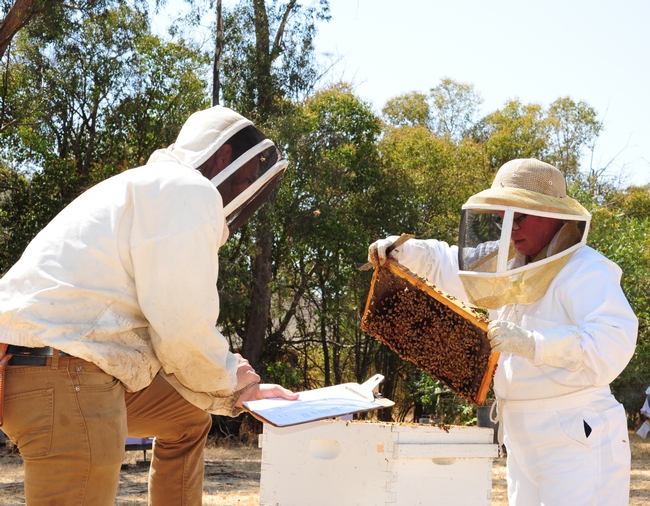
Cheryl Veretto was first in line to take the California Master Beekeeper Program practical test administered in September 2016. With her is UC Davis research associate Charley Nye, CAMBP examiner and manager of the Laidlaw facility. (Photo by Kathy Keatley Garvey)
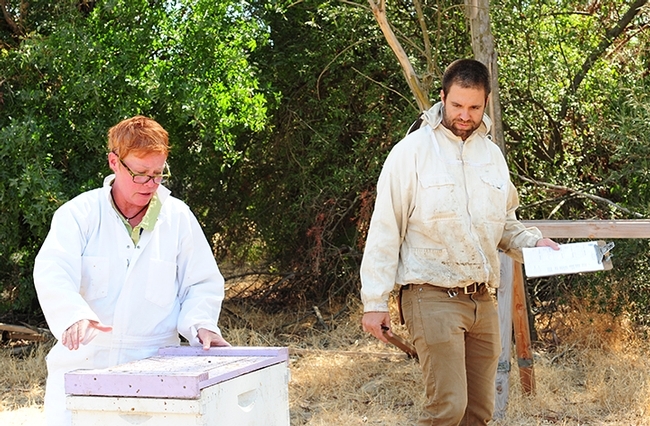
With their veils off in this portion of the CAMBP practical test, examiner Charley Nye watches Cheryl Veretto finish the last steps of her test. (Photo by Kathy Keatley Garvey)
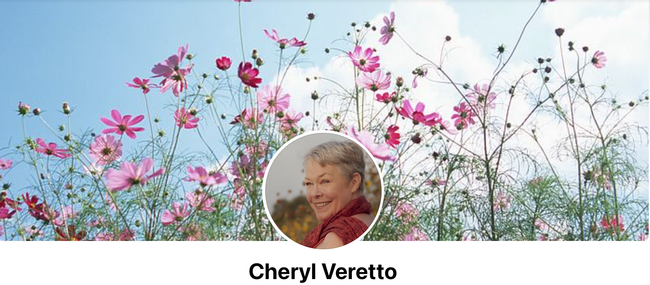
Cheryl Veretto's Facebook page.
The Bees of Bodega Head
There's more to Sonoma County's Bodega Head than the stunning views, crashing waves, nesting seabirds, and bursts of flora and fauna. The...
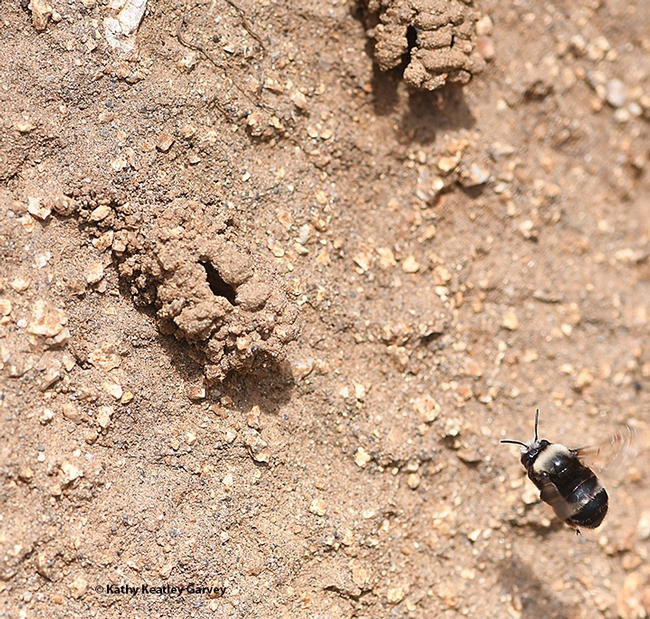
A digger bee, Anthophora bomboides stanfordiana, returning to her nest on the sand cliffs of Bodega Bay. (Photo by Kathy Keatley Garvey)
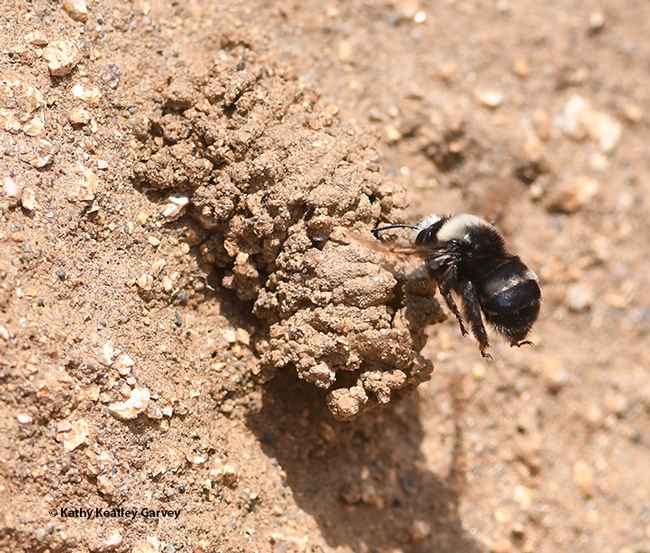
A digger bee, Anthophora bomboides stanfordiana, edges closer to her nest on the sand cliffs of Bodega Bay. (Photo by Kathy Keatley Garvey)
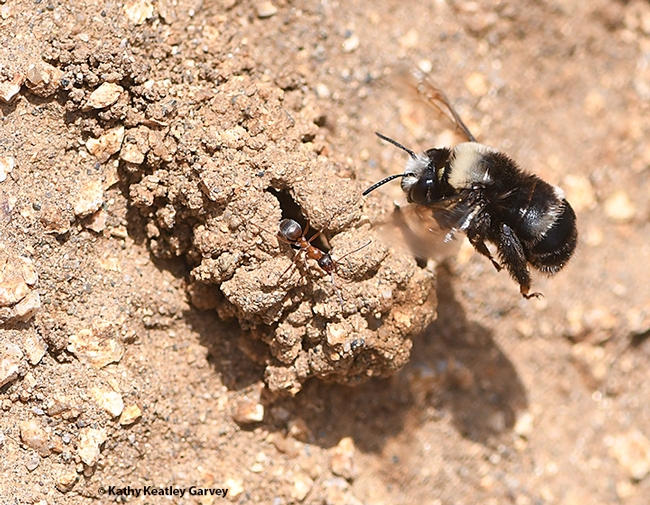
A bee-ant encounter: The digger bee, Anthophora bomboides stanfordiana, encounters an ant, Formica transmontanis, as identified by ant specialists Phil Ward and Brendon Boudinot of UC Davis. Both species nest on the sand cliffs. (Photo by Kathy Keatley Garvey)
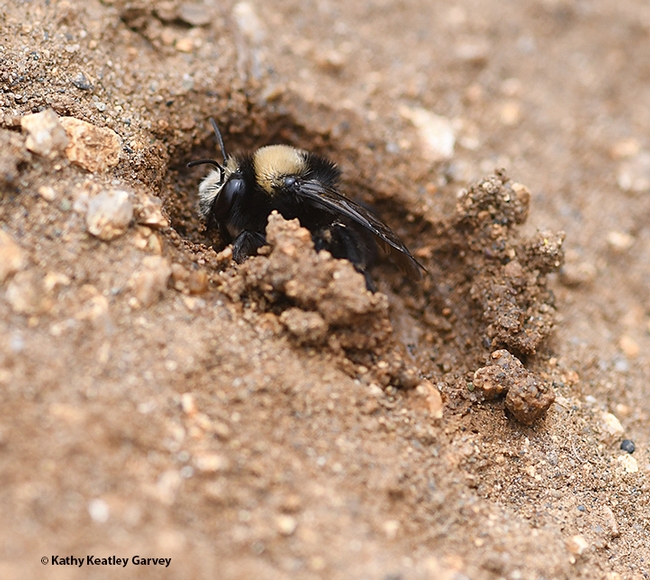
A digger bee, Anthophora bomboides stanfordiana, excavating a nest on the sand cliffs of Bodega Head. (Photo by Kathy Keatley Garvey)
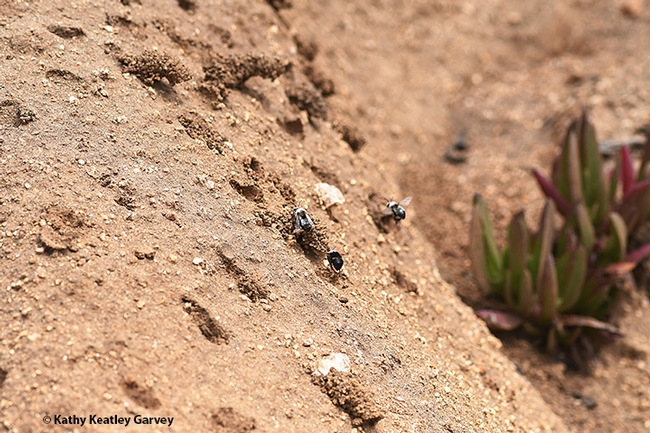
Four digger bees, Anthophora bomboides stanfordiana, appear in this image at Bodega Head. (Photo by Kathy Keatley Garvey)
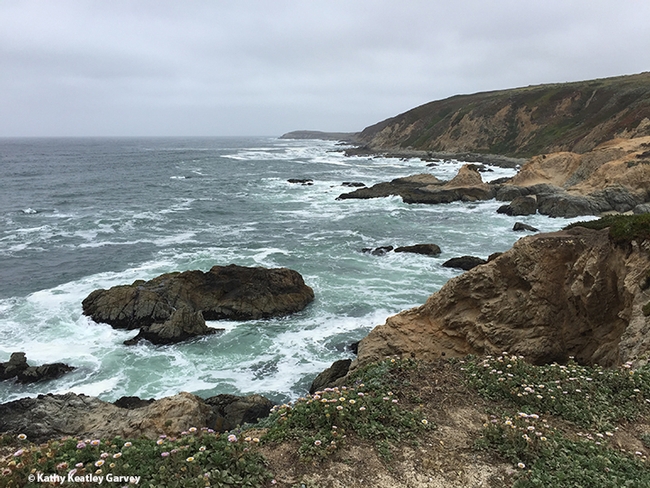
A view from Bodega Head. Most tourists are unaware of the digger bees that inhabit the sand cliffs. (Photo by Kathy Keatley Garvey)
Handing Over the Bees!
Beekeepers circled biologist Randy Oliver, commercial beekeeper, scientist, writer and educator, as he held court in the apiary of the Harry H....

Beekeeper-scientist Randy Oliver of Grass Valley gestures during his presentation. (Photo by Kathy Keatley Garvey)
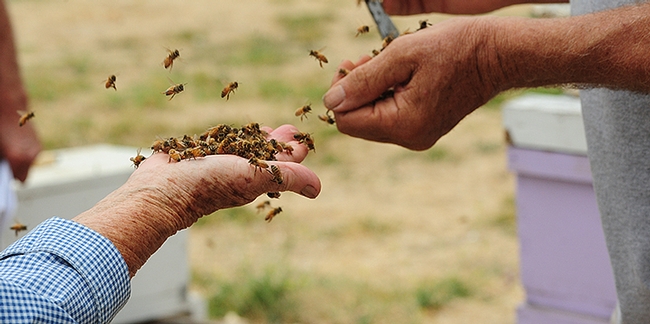
Randy Oliver hands over bees to beekeeper Ettamarie Peterson of Petaluma, a member of the Sonoma County Beekeepers' Association and the Western Apicultural Society. (Photo by Kathy Keatley Garvey)
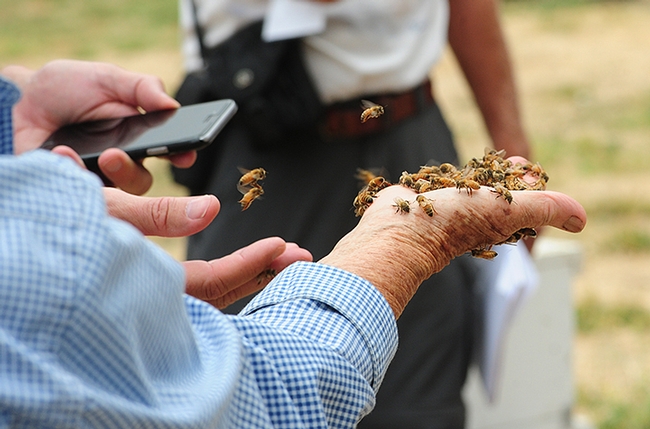
Beekeeper Etta Marie Peterson displays a handful of bees as a cell phone photographer captures the moment. (Photo by Kathy Keatley Garvey)
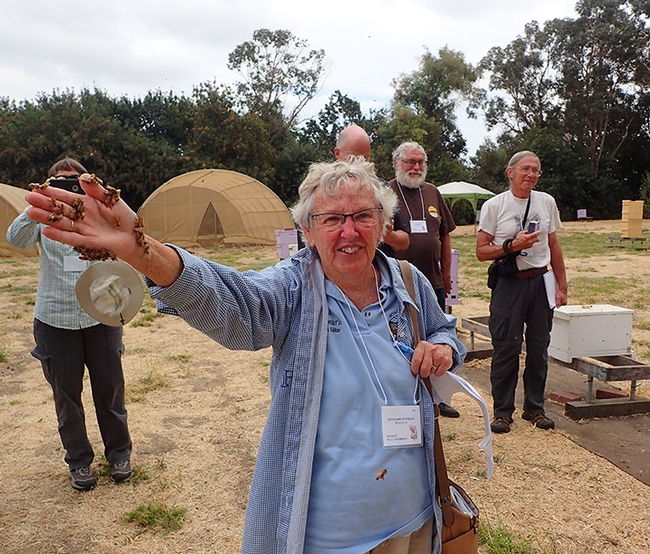
If a bird in the hand is worth two in a bush, what's a handful of bees worth? Ettamarie Peterson, Petaluma beekeeper and member of the Sonoma County Beekeepers' Association and the Western Apicultural Society, displays a handful of nurse bees. (Photo by Kathy Keatley Garvey)
You're An Obsession, My Obsession
My current gardening obsession is hunting for nurseries and resources that carry perennial vegetables. Such plants are usually available in the U.S. during the Spring (they are currently available at this time of year in Australia), but being the impatient personality that I am, I am anxious to get going now.
But this post is not about perennial vegetables—that will come in a later post once I succeed in acquiring said unusual and rare plants (such vegetables will go well beyond asparagus and artichoke), which may occur sometime in August (if you are interested, see www.oaec.org). It was my pursuit of these perennial vegetable plants that led me to recently stumble across a wonderful bakery and a small edible garden tucked behind it, which is the subject of this post.
So you ask—where is this place where one can find both amazing food and a beautiful garden? The answer--in Freestone located in Sonoma County. The bakery is called “Wild Flour Bakery” and features tasty creations such as sticky bun bread, scones dotted with strawberry and white chocolate, and savory goods (see http://www.wildflourbread.com/). The garden behind the bakery is cleverly named “Wild Flower Gardens” (play on the word “Flower” and “Flour”) which I suspect supplies some of the fruit used in the bakery’s baked goods. Unlike many edible gardens that can become overgrown because there is so much to manage, Wild Flower Gardens is, on the whole, well-ordered. In that space, you will find a small grove of young fruit trees consisting mostly of pears and plums. Also, in that space, are edible plants (kale, lettuce, raspberries, grapes, herbs, etc.) combined with ornamentals, the arrangement of which always interests me, because I enjoy seeing how people integrate these seemingly disparate groups of plants so that they look harmonious together. Best of all, there is seating scattered throughout the garden where you are invited to bring your fresh baked goods in to sit down and enjoy. It is a great little weekend getaway, just slightly over an hour from Solano County--not to be missed!

Rows of vegetables. (photos by Betty Homer)
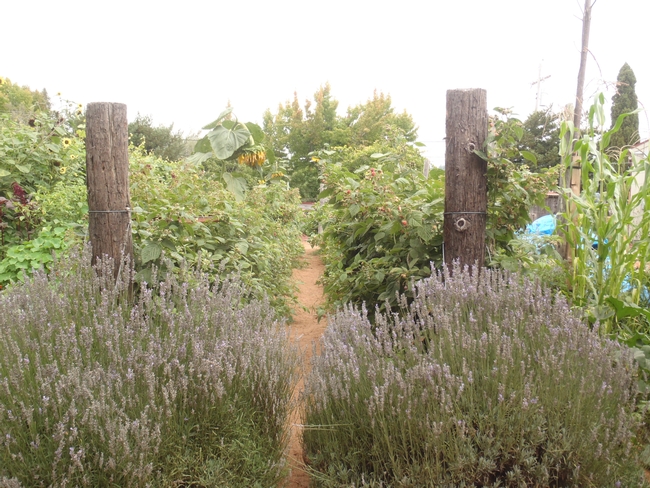
Lavendar and berries flank this pathway.

Grapevines above and nasturtiums below-enter at your own delight.

Sunflowers, and plumes of Amaranth in the background with cabbages in the fore.
Bee-Helpful Cover Crops in Vineyards
Kathy Kellison is on a mission: to encourage winegrape growers to plant “Bee-Helpful Cover Crops.” This would include mustards, clover...
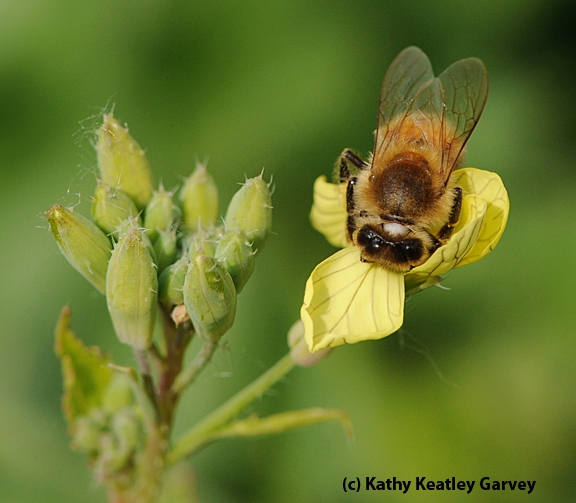
Honey bee foraging on mustard, a good cover crop for bees. (Photo by Kathy Keatley Garvey)

Upside down honey bee on mustard. (Photo by Kathy Keatley Garvey)

